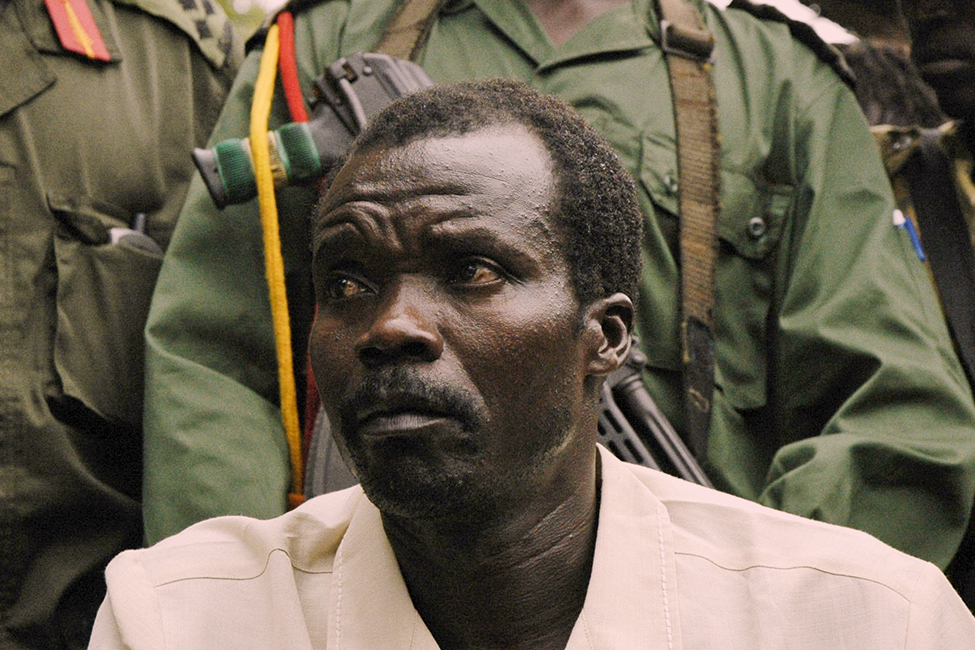Joseph Kony’s LRA conflict is as multi-faceted as it is devastating. We understand that it can be difficult to fully grasp how it started, what has happened in the past 27 years, and why we need to work together to bring an end to LRA atrocities. Therefore, we’re starting a blog series to answer some of the questions you’ve been asking. Think of it as a crash course in everything you should know about the LRA conflict – we call it Kony 101.
My name is Camille and I am an intern for the central Africa programs. For the next few weeks I will be sharing with you things I have learned about the LRA, how it operates, how we identify LRA combatants, what the group represents, and what Kony is fighting for.
First up: What is the LRA?
The LRA began almost 30 years ago as an evolution of the ‘Holy Spirit Movement’ (HSM) – a rebellion against President Yoweri Museveni’s oppression of northern Uganda, led by Alice Lakwena. The conflict is regarded as the result of the post-decolonization internal struggle between the Acholi and other peoples in the north and the central government of Uganda.
When Alice Lakwena was exiled, Joseph Kony self-appointed himself as the head of the group, changing the name to the Lord’s Resistance Army (LRA). As the group lost regional support, he quickly started a trend of self-preservation that would come to characterise the rebel group, stealing supplies and abducting children to fill his ranks. The LRA also incorporated members of an ongoing rebel group in northern Uganda, the Uganda People’s Democratic Army (UPDA), which had more militaristic and classic rebel group composition. Utilizing the combination of the two styles of rebellion, the LRA evolved into a group that utilized mystical elements from the HSM and military structures and training from the UPDA. Members of the UPDA were also enveloped into the group’s command structure.

Joseph Kony, leader of the LRA rebel group
The Ugandan government demonstrated a lack of capacity, and in many cases willingness, to protect civilians from the LRA. It required the people of northern Uganda to leave their communities and villages to settle in internally displaced persons (IDP) camps, within which disease and violence were common.
The LRA terrorized these northern communities for over two decades until peace negotiations started in Juba, South Sudan, in 2006.
After two years of negotiations, Joseph Kony failed twice to show up to sign the Final Peace Agreement with the government of Uganda, both in April and and again in November of 2008. It became clear that Kony had only entered the peace talks in order to regroup and gain strength, as evidenced by his abduction raids in the Central African Republic (CAR) at the time. After the failure of the Juba Peace Talks, the countries of Uganda, DR Congo, CAR and Sudan coordinated their efforts to launch Operation Lightning Thunder, an offensive against the LRA (which had relocated in Garamba National Park in northeastern DR Congo during the peace talks). Kony somehow learned of the attack in the hours before the air-raid and was able to escape.
In retaliation to Operation Lightning Thunder, Kony and the LRA attacked villages in the DR Congo on December 24, 2008 and between December 14-18, 2009. During these massacres, known as the Christmas and Makombo Massacres, the LRA killed 1,186 civilians and abducted 410.
Today, the LRA operates in smaller groups. Regardless of their seeming independence, these groups still operate under Kony’s command. It is believed that Kony still controls his combatants from his movements between north-eastern CAR and Kafia Kingi, Sudan.

Over the years, the LRA has killed and kidnapped hundreds of people, and forced entire communities to live in displaced camps. Invisible Children works with local organizations to help those affected by the LRA rebuild their homes and look forward to a brighter future.
For a more in-depth look at the LRA’s history, watch this video:
Stay tuned for next week’s blog, ‘’What does the LRA want?”
Think people should hear about this?